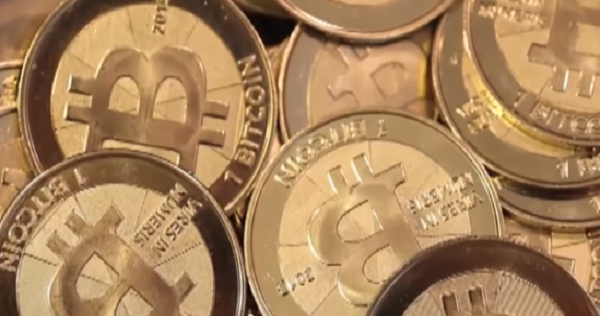
Within the current maelstrom involving an invigorating and glaring malignant energy, the future of currency, along with a cavalcade of logistical and nightmarish issues is already claiming a stake in the 212 trillion dollar global economy.
The veritable bitcoin and the burgeoning gold rush mentality of the cryptocurrency market, is a true metaphor for the wild wild west, along with the reality of decentralization which brings the increased risk directly to the buyer and trader of the swift and stealth furtive actions of a hacker. Poof. The money is gone and the powers that be online will simply attribute the loss to tough luck. How long cryptocurrency remains a viable monetary unit and can withstand the pending market correction, remains at the forefront of the massive speculation from pundits and critics.
The problem with the cryptocurrency craze is not the laissez-faire mentality of the marketplace which is substantially overvalued with a monumental crash inevitable, but rather with the current misconceptions about what exactly bitcoin is and how it is valuated. Until, the mainstream media and the majority of the public take the opportunity to conduct the proper research, billions of dollars could potentially be lost into the ether of the dark web, in thieving efforts facilitated by unscrupulous individuals and organizations.
The most glaring issues of the cryptocurrency infrastructure involve the fundamental framework of the system and the staggering energy resources required in verifying transactions. Essentially, bitcoin achieves value through electricity. More specifically, each bitcoin transaction requires energy to initiate and even more energy to validate. This translates to increased electricity costs in running industrial grade computers armed with rugged gaming grade graphic cards in ensuring that each transaction is logged and follows protocol. There is no magic commodity fueling bitcoin, just simple brute computing strength in the trial and error process of hunting for the elusive 64 character string of “hashes” in keeping the accounting book of the blockchains flawless. Interestingly enough, as with the technological basis for the internet was facilitated with US military hardware and software, ironically the inception of the blockchain and the unbreakable code was spawned in the laboratories of the National Security Association. (The possible applications for blockchain technologies in replacing current methodologies for securing data and creating increased redundancy as a back-up for vital information in all industries is extremely intriguing.) Estimates on the energy cost of a single transaction ranges from $7 to $19 and finding a bitcoin nets $1000 worth electricity (or four months of what the average US homeowner pays on electric bills). With over 300,000 transactions per day, the math gets crazy, as individuals race to build more powerful and energy consuming computers in mining the elusive bitcoin, and this is not even scratching the surface, as the technology is yet to penetrate the mainstream marketplace.
Here is the catch, as more blocks are added to the chain, it becomes more difficult to solve the algorithms in verifying transactions and producing a bitcoin, thus increasing energy consumption logarithmically. Currently, one bitcoin is produced about every ten minutes. Thankfully, there exists a finite amount of the currency (22 million minus 4 million that have been lost), but if demand continues to grow, what detrimental effects will this have on the energy grid? Not surprisingly, the environmental lobby has yet to demand sanctions on mining operations, probably because of the leading pundits are also investors in the marketplace. Interestingly enough, certain cryptocurrency mining operations in third world country are reliant on coal produced electricity and as they continue to grow, so does the carbon footprint, which leaves an interesting paradigm as to the future of a so-called sustainable enterprise.
As noted, while the blockchain technology is impossible to hack, the chink in the armor is with the cyber wallets of the customer, a harrowing reality that is accentuated by the complete lack of law enforcement presence or governing agency in dealing with fraud. A decentralized platform comes with none of the guarantees in banking with agencies protected by the FDIC or in trading through syndicates governed by the FTC. Currently, the end user is at the whim of whatever legion of online burglars decides if and when to begin liquidating accounts. With the infrastructure in its infancy, it will be interesting to see what security solutions are developed in stabilizing a glaring potential nightmare for customers. Experts are predicting that a full scale attack will occur as the number of investors setting up digital wallets continues to grow. Anti-viral software mogul John McAfee has evolved as a staunch proponent of the cryptocurrency market, which brings an intriguing element to the possible improvements in secure options for transactions through software innovation or providing ransoms to certain elements the criminal underworld in preventing attacks. The lucrative “cyber security’ market and the tedious relationship dynamics with the hacking community (revenue sharing?) demands a separate article.
While the investment potential of cryptocurrency is currently at the height of a trendy gamble and typified by ardent speculation, the actual implementation into the business sphere and the average citizen paying for groceries or a latte with bitcoin is eons away. As energy and security concerns are alleviated by the infusion of new innovations and the implementation of government regulations for the protection of investors are expected within the next decade, unfortunately the short term outlook for bitcoin points to an inevitable monumental correction to the market.